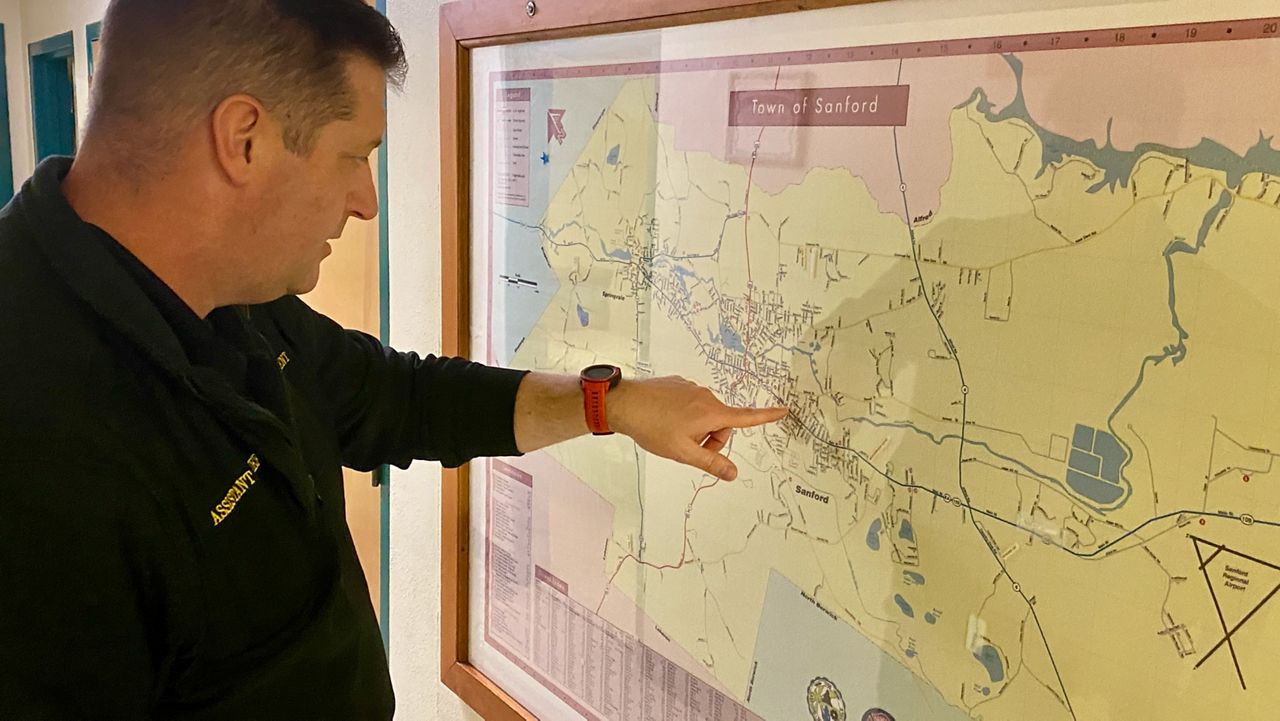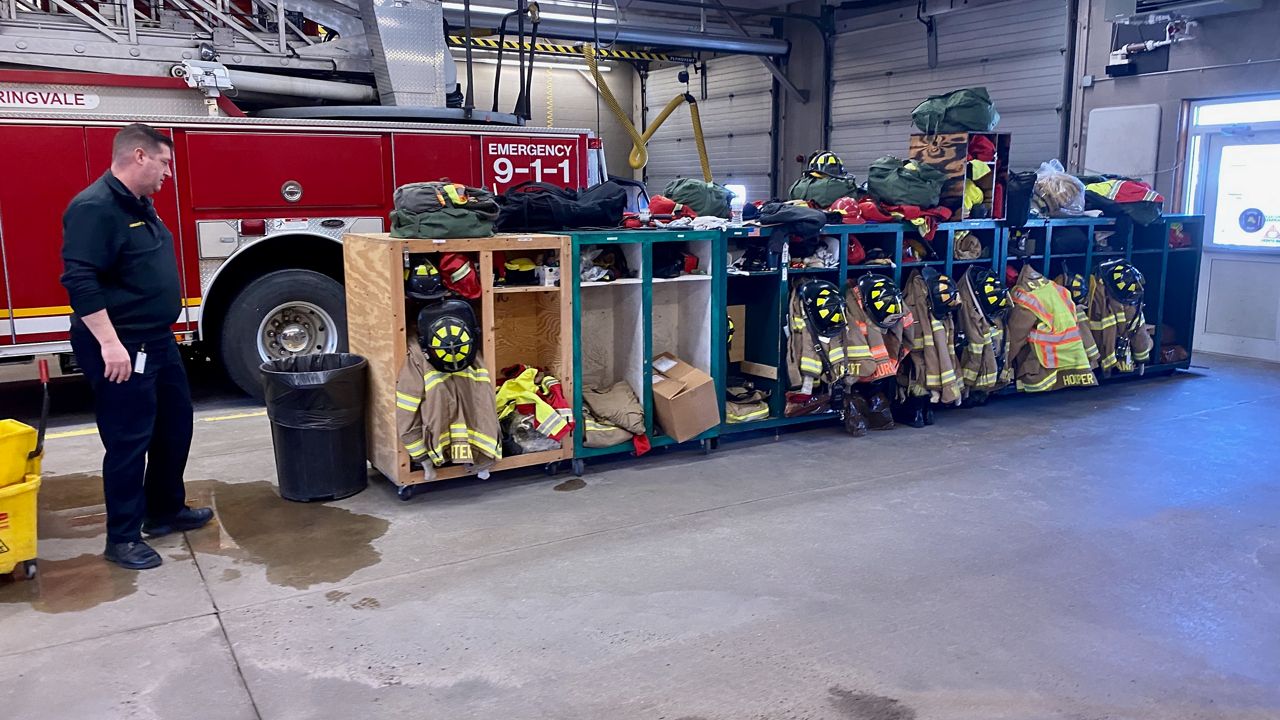Sanford’s Central Fire Station functions well as the city’s primary fire department facility but is beginning to show its age, says Assistant Fire Chief Robert Arnold. After 60 years, the building, located on Main Street, is overrun with vehicles and equipment.
“It looks big enough, but it’s full,” Arnold said.
The station is one of three managed by the Sanford Fire Department, with other stations in South Sanford and Springvale. Officials have grappled for years with how to replace the aging stations with modern facilities while strategically improving how the department serves the citizens of Sanford and Springvale.
With a recent acquisition of property on Main Street, the fire department is one step closer to redefining how it serves these communities. On Feb. 1, the city council approved the purchase of a property at 1280 Main Street, the first step in a consolidation plan that will replace the three aging fire stations with new modern facilities.
Sanford’s mayor, Anne-Marie Mastraccio, said the city is using funds from the American Rescue Plan Act to avoid floating a bond to pay for the acquisition.
“That was the whole point. We didn’t want to have to (pay for this with a bond),” she said.
The location for the city’s second new fire station is still being debated. The department and city officials seem to agree that an area of the Memorial Gym, near the Willard School on the northern end of Main Street, would be ideal, but Mastraccio stressed that city officials have not yet found a parcel of land.

“Nothing has been decided at all,” she said.
During a tour of the central station, Arnold pointed out several problems with the aging building — including a challenging lack of space.
The department stores two ambulances, two fire engines, a ladder truck, one heavy rescue vehicle and a forestry vehicle all at the central station. A pickup truck for the local fire marshal has to sit outside in the parking lot, Arnold said.
“We couldn’t put a pickup here,” he said, gesturing around the station’s crowded garage. “I’d love to, but it wouldn’t fit.”
The station’s overall design, Arnold said, harkens back to another era.
For example, the station wasn’t built with female firefighters in mind. Today, the department has three women, including a Lieutenant, who share a single-sex bathroom and shower facilities with male co-workers. Cleaning up after fighting a fire can be awkward, at best.
The station also wasn’t designed to deal with today’s long-term dangers of exposure to dust, exhaust and other contaminants.
Firefighters’ helmets, boots and uniforms sit neatly in a rack in the middle of the garage, but Arnold said that modern stations store a department’s turnout gear in a separate room to keep it from getting saturated with fumes and debris from the vehicles.
Sinks for cleaning gear after returning from a fire scene, he added, are close to the main station, which allows soot and other materials inside the station.
“We don’t want (the contaminants) where we live,” he said.
The other two stations have similar problems, Arnold said.
The station in South Sanford, near Sanford Airport hasn’t been staffed with firefighters for years and serves as little more than a garage at this point.
The department’s third station, at 5 Oak St. in the city’s Springvale neighborhood, is just as full as the central station, Arnold said, and is more than 100 years old
“There’s a lot of great history there. We’re not trying to erase any of that. It just doesn’t fit anymore,” he said.
As part of this consolidation plan, the department wants to strategically improve how it provides coverage. Right now, Arnold said, portions of South Sanford are far enough away from the central station that it might take longer than the ideal six-minute trip for firefighters to respond.
One of the proposed new locations, at 1280 Main Street, is closer to South Sanford and would improve coverage for much of the southern portion of the city. If the city can find a parcel of land near the Willard School area, Arnold said, the city’s second station would then sit on the southern border with Springvale. That would give more coverage to the city center, but still cover Springvale with the same response times the department offers now.
“Most of the city (would be) within the six-minute mark when we (use) lights and sirens,” he said.
Each new station would be larger than any of the city’s existing stations, Arnold said, thus easily accommodating the department’s staff and equipment. Mastraccio said officials have been discussing upgraded stations for years, but the talks started moving from theory to practical application last year when the city established the Fire Station Feasibility Working Group.
“We decided that we needed to have more people involved,” Mastraccio said.
The city won’t take further steps, such as designing buildings, until it has purchased both parcels. With space at a premium, Mastraccio said, it’s hard to say how long that will take.
“That’s part of the problem with building in your urban core, if you will. There’s not a lot of land available,” she said.
Still, Arnold said he viewed the single acquisition as a positive step forward.
“We’re farther ahead than we were a year ago,” he said.



